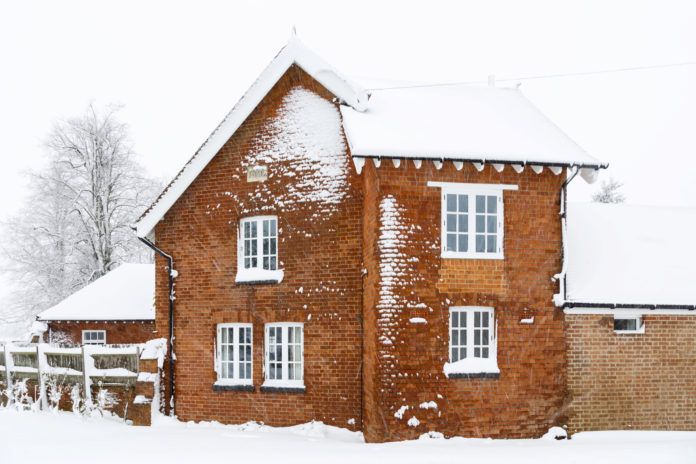With forecasters predicting the coldest and snowiest winter for decades, how should roofing contractors be preparing? Tom Woodhouse, site services manager at Marley, gives his top tips on site safety and roof installation in winter.
Depending on which newspaper you read, you’ll have no doubt seen weather forecasters predicting that the UK is set to face the worst winter weather in the last 50 to 70 years. While there may be some scepticism about this type of prediction, warnings of extreme winter weather can’t be taken too lightly after the Beast from the East and Mini Beast snowstorms in 2018, which caused construction activity to grind to a halt.
With long range forecasts predicting even more snow this winter, contractors should take steps now to make sure they are prepared for ongoing freezing conditions over the next few months. While site safety has to be the main priority, there are also other important considerations in winter to ensure that pitched roofs are durable and secure.
Here are my top tips for roofing in winter:
Site safety
- Monitor the weather forecast so you can anticipate and be prepared for poor weather conditions. Carry out a risk assessment every day to check that it is safe to work and that conditions haven’t changed. Pay particular attention to working at height platforms and do not work on roofs in icy conditions – this is a requirement of the Working at Height Regulations 2005.
- Make sure you are wearing the right PPE and extra clothing suitable for the job and the weather conditions. This usually involves wearing several layers of clothing, as well as waterproofs or wind resistant fabrics where necessary. Also, choose water resistant footwear, with enhanced slip resistance or ice grips if required to help prevent any slips.
- Wear gloves when fine manual dexterity is not required, and the temperature drops below 4°C. Also choose hats that work with safety headgear and don’t compromise any eye or hearing protection.
- Cold weather increases the risk of hand-arm vibration syndrome. Keep your hands and arms warm when using vibratory equipment such as drills, nails guns and even hand tools, such as hammers.
- Take breaks in heated areas. Also, drink plenty of fluids, including water and warm beverages.
Installation and storage
- Always install roofs to the BS 5534:2014 standard, as this was revised to help make roofs more secure against extreme weather. Get a new fixing specification for each project, as this will help ensure the roof is as wind resistant as possible. You can get a free fixing specification from our website www.marley.co.uk/specifying.
- Make sure that any clay tiles you use have passed all freeze/thaw test requirements. In the UK, clay tiles face a challenging environment because they have to go through many more freeze thaw cycles than those used in colder or warmer countries. That’s why EN 1304: the European Standard details robust test criteria to confirm freeze/thaw resistance. Clay roof tiles in the UK have to pass a minimum of 100 cycles to achieve CE marked status when tested in accordance with the frost test method detailed in BS EN 539-2: the European Standard test method for frost resistance.
- All of Marley’s clay tiles have been tested to meet these standards and carry the CE mark to demonstrate conformity. If you are using clay tiles manufactured outside of the UK, as a minimum they should match the standard BS EN 1304 when tested to BS EN 539-2, otherwise they may not be durable enough for our changeable weather conditions.
- Ensure roofing products are stored correctly. Many roofing products are delivered to site shrink wrapped but, for products that aren’t, like battens, make sure they are protected from the weather or store them in racks that have a roof. Battens should always be stored on bearers, spaced so that twisting and sagging is prevented and protected from water saturation.
- Protect unfinished roofs. Avoid using wet battens where possible and get roofs covered in at the earliest opportunity to prevent moisture damage.
- Use dry fix where possible. Mortar should be avoided in very cold conditions, so even though mortar bedding with mechanical fixings is allowed under BS 5534, it may be worth switching to full dry fix systems in the winter to enable roofing work to go ahead. If you are going to keep using mortar in the winter, the NHBC states that it should not be used below 2°C, to resist frost damage.
To help you prepare for freezing temperatures, Marley is giving away 100 cosy snoods to keep your head and neck warm on site this winter. For your chance to get one, visit the Marley website and fill in your details.




